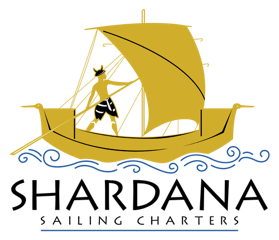The Role Oysters Play in Cleaning the Water of Chesapeake Bay
The Chesapeake Bay is the largest estuary in the United States and a critical ecosystem for marine life, local economies, and surrounding communities. However, the bay has faced ongoing challenges, including pollution, excess nutrients, and in the past, declining water quality. One of nature’s most effective water filtration systems is also one of the bay’s most iconic species: the oyster.
Nature’s Natural Filter
Oysters play a crucial role in maintaining the health of the Chesapeake Bay. These bivalve mollusks feed by filtering water, removing algae, plankton, and other organic particles from their surroundings. A single adult oyster can filter up to 50 gallons of water per day, significantly improving water clarity and quality. This filtration helps reduce excess nitrogen and phosphorus levels—key contributors to harmful algal blooms that deplete oxygen and create dead zones in the bay.
How Oysters Benefit the Ecosystem
Improving Water Clarity – By removing excess plankton and suspended particles, oysters enhance sunlight penetration, promoting the growth of underwater grasses essential for marine habitats.
Reducing Nitrogen Pollution – Oysters absorb nitrogen from the water and incorporate it into their shells and tissues, reducing harmful nutrient buildup.
Creating Habitat for Marine Life – Oyster reefs serve as essential habitats for various species, including crabs, fish, and other marine organisms, fostering biodiversity.
Enhancing Coastal Resilience – Oyster reefs act as natural breakwaters, reducing shoreline erosion and protecting coastal communities from storm surges.
The Decline of Oyster Populations
Despite their benefits, oyster populations in the Chesapeake Bay have declined dramatically over the past century due to overharvesting, habitat destruction, and diseases like Dermo and MSX. At their peak, oysters could filter the entire volume of the bay in just a few days. Today, due to population losses, it takes significantly longer for this natural filtration to occur.
Restoration Efforts and Solutions
Recognizing the critical role oysters play in restoring the bay, conservationists, scientists, and government agencies have implemented various initiatives:
Oyster Reef Restoration Projects Organizations like the Chesapeake Bay Foundation and the Oyster Recovery Partnership are rebuilding oyster reefs using recycled oyster shells and artificial reef structures.
Aquaculture and Oyster Farming Sustainable oyster farming not only supports local economies but also enhances water quality by introducing more oysters to the bay.
Strict Harvesting Regulations – Policies limiting overharvesting and establishing sanctuaries help protect and replenish wild oyster populations.
Public Engagement and Volunteer Programs – Programs encouraging individuals and businesses to recycle oyster shells and support restoration efforts play a key role in oyster conservation.
The Future of the Chesapeake Bay
Restoring oyster populations is essential to improving the health of the Chesapeake Bay. Through continued conservation efforts, sustainable aquaculture, and community involvement, these remarkable mollusks can help turn the tide against pollution and declining water quality. Supporting oyster restoration projects is not just about protecting a single species—it’s about ensuring the long-term health of the bay and the communities that depend on it.
By working together, we can help oysters reclaim their role as nature’s most efficient water filter and restore the Chesapeake Bay to a thriving, healthy ecosystem.
Of course we should also be rewarded for our efforts…..
Did you know with enough lead time, Shardana can arrange to visit a Chesapeake Bay oyster farm as part of a multi-day charter? Contact Us for availability.



